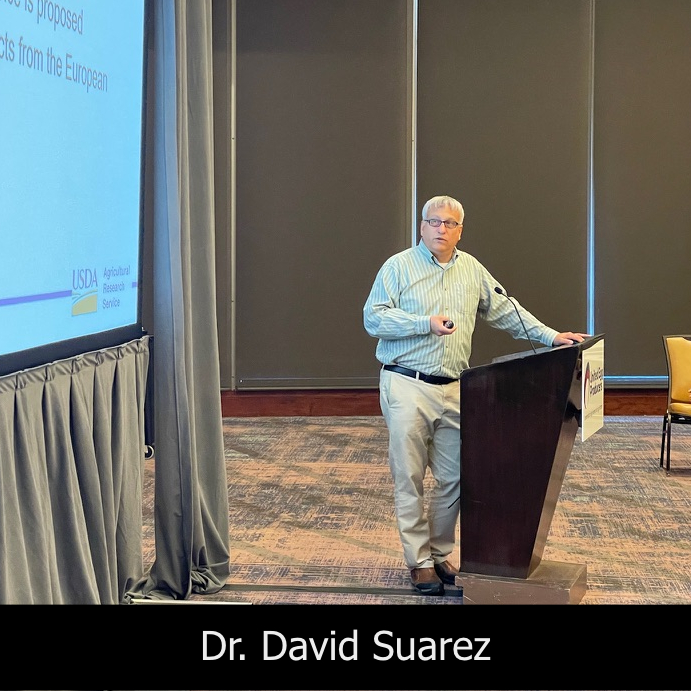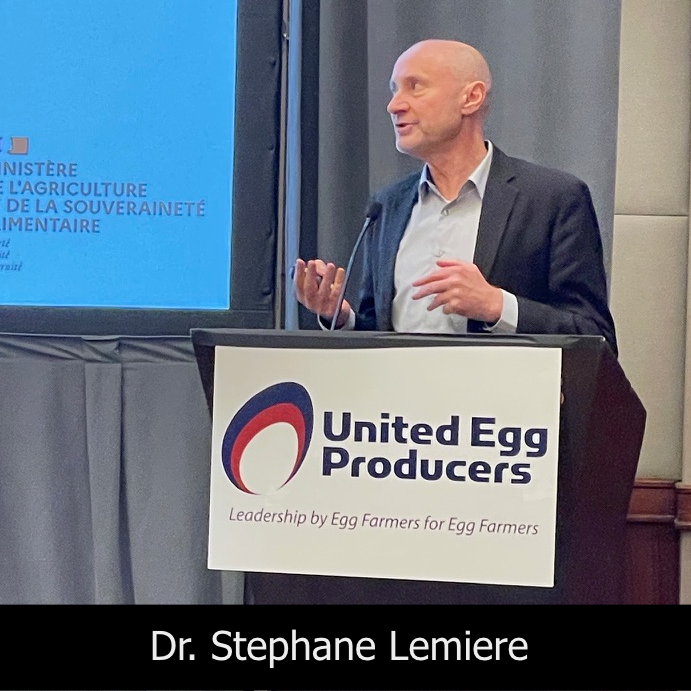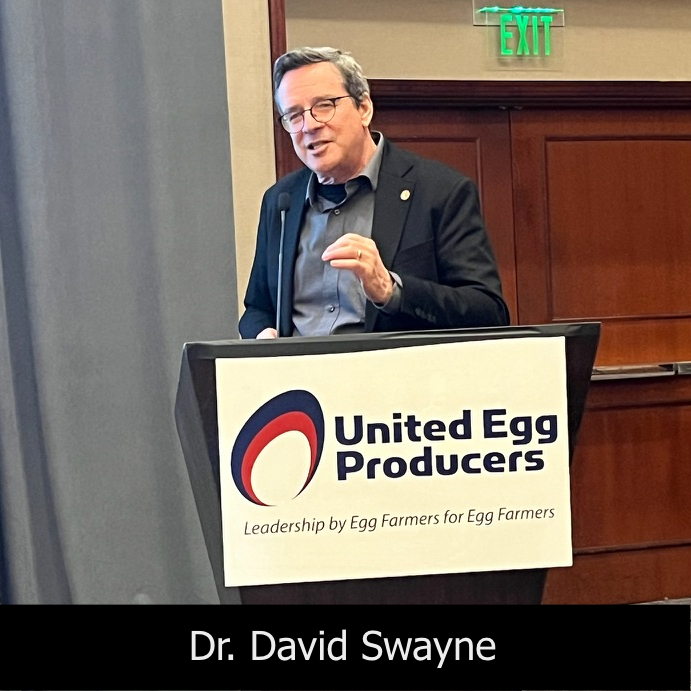February 8, 2024
Before kicking off UEP’s 2024 January Issues Briefings and Committee Meetings, UEP hosted three global experts to discuss vaccination, surveillance needs, and trade hurdles related to the ongoing Highly Pathogenic Avian Influenza (HPAI) outbreak.

Dr. David Suarez, laboratory director for exotic and emerging avian viral diseases research at USDA Agricultural Research Service (ARS), began the HPAI session with a discussion on vaccination trials and provided an overview of 2023 HPAI detections. Dr. Suarez shared an update on the initial testing of five HPAI vaccine candidates that began last year, which showed that vaccines reduced oral and cloacal virus shedding significantly and provided nearly 100% protection against mortality. While current vaccines have shown efficiency in protecting against disease, Dr. Suarez emphasized that U.S. HPAI vaccination would create challenges with trade partnerships.

Dr. Stephane Lemiere, global head of veterinary services for Boehringer Ingelheim, offered an overview of the European HPAI experience and mitigation strategies. During Dr. Lemiere’s global HPAI update, he shared updates from France and the country’s attempts to protect flocks from HPAI by conducting a mass vaccination of 64 million ducks in 2023-2024. Dr. Lemiere concluded with an overview of an HPAI study conducted at Wageningen University and Research, which shows that both HVT-H5 vaccines helped prevent viral transmission between hens.
 Dr. David Swayne, a veterinary pathologist and poultry veterinarian with Birdflu Veterinarian, LLC, rounded out the session with a discussion on surveillance needs, stating that the goal of surveillance is to identify infections in vaccinated populations, as is already done for non-vaccinated poultry. Dr. Swayne outlined multiple critical issues regarding HPAI poultry vaccination surveillance, including the type of vaccine used, detection of active infection (virus) or past infections (antibodies), sample type, prevalence, confidence interval, and testing frequency. Dr. Swayne noted that HPAI still is regarded as a foreign animal disease (FAD), and that continued work and research on surveillance are needed.
Dr. David Swayne, a veterinary pathologist and poultry veterinarian with Birdflu Veterinarian, LLC, rounded out the session with a discussion on surveillance needs, stating that the goal of surveillance is to identify infections in vaccinated populations, as is already done for non-vaccinated poultry. Dr. Swayne outlined multiple critical issues regarding HPAI poultry vaccination surveillance, including the type of vaccine used, detection of active infection (virus) or past infections (antibodies), sample type, prevalence, confidence interval, and testing frequency. Dr. Swayne noted that HPAI still is regarded as a foreign animal disease (FAD), and that continued work and research on surveillance are needed.
The HPAI session concluded with a robust Q&A session, allowing attendees to further explore the issues shared by the presenters. As HPAI remains a significant threat to the global poultry industry, identifying new solutions and mitigation strategies is paramount. UEP will continue to keep members apprised of HPAI-related issues and help protect the nation’s layer flocks.
For video, photos and other resources, view Resources.
For media inquiries or
interview requests, contact Hinda Mitchell.